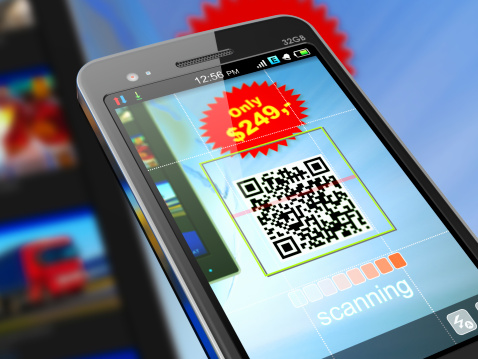 We've heard "this will be the year of mobile" for a while now. Dharmesh Shah, co-founder and CTO of HubSpot, disagreed that 2013 was going to be the year of mobile. Why? Because, he said, the year of mobile was already past - and now we're playing catch up. With ecommerce sales from mobile growing another 15% YOY to over $60.8B, it's time to get serious about mobile.
We've heard "this will be the year of mobile" for a while now. Dharmesh Shah, co-founder and CTO of HubSpot, disagreed that 2013 was going to be the year of mobile. Why? Because, he said, the year of mobile was already past - and now we're playing catch up. With ecommerce sales from mobile growing another 15% YOY to over $60.8B, it's time to get serious about mobile.
Last year was a banner year for ecommerce. According to comScore, online spending had topped 2012 by 13% in the third quarter. Not too shabby, right? While ecommerce giants like Amazon and Overstock.com continued their expected success and brick-and-mortar superstars like Walmart and Target experienced major online growth, the real winners—and the ones to watch for in the coming months—were the mom-and-pop online shops and etailers designed for a niche market.
The Clear Winner
With all the success stories floating around—small businesses, big businesses, new businesses, revived businesses—many people might overlook the clear winner for 2013: mobile commerce. Reports show ecommerce’s busiest weekend was Thanksgiving through Cyber Monday, which is no real surprise. What might raise an eyebrow or two is the fact that nearly one-third of the purchases made during those days were by mobile devices. In fact, mobile shopping has increased by nearly 60% since 2012.
Looking Forward to 2014
Reminiscing isn’t a bad thing, as long as you’re willing to learn from the past. Ecommerce companies without a significant mobile presence probably learned a great deal from their losses in 2013. In order to prepare for the coming year, companies should concentrate on the technology needed for mobile marketing and sales.
Perhaps the most important is responsive design for ecommerce websites. Creating a design that shoppers can actually understand and use will go a long way toward inspiring mobile purchases. The most important aspects of a great mobile design include easy-to-read text, images that clearly show the products, plenty of space around links for clicking, and filtering options to cut down on searching and scrolling. The easier you can make the process through your mobile design, the less likely your customers are to get discouraged.
To make mobile purchases even easier, you could employ a one-click checkout process, such as the one used by Amazon. If customers have to enter their information every time they make a purchase, they may decide the hassle isn’t worth the reward. With a one-click system, you may see your mobile sales skyrocket, as buyers drop in for impulse purchases.
Responsive design and one-click purchases can definitely boost your mobile sales, but if you’re willing to take your technology one step further, consider an app for smartphones and tablets. With an app, you could cover all your bases with one program. The app could keep safe the financial personal information for individual buyers, provide suggestions based on previous purchases, help buyers locate hard-to-find products, and many other possibilities. Of course, reminding people you have an app is just another part of the battle.
Soaring Social Purchasing
One aspect of your mobile marketing plan you simply can’t forget is social media. While conflicting reports state social media’s popularity all over the place, you simply can’t deny the numbers. Of purchases made through social media platforms, 35% of Twitter buyers bought all of the products on a mobile device, 19% of Pinterest users, and 17% of Facebook users.

If you’re not planning to use more social media marketing in the coming year, you could miss out. Be sure your marketing tactics include easy-click links to your website so buyers don’t get frustrated during the purchasing process.
Savvy social marketers are also discovering ways to use Snapchat and Instagram Direct for guerilla-style marketing. The latest update from Instagram allows users to send images and captions directly to individual users rather than posting to a public board. Snapchat, of course, allows the same thing, but those images disappear after a set time. If your company’s customers fit the demographic using these tools, start determining how you might take advantage of their popularity while it lasts.
Be Responsive
It's a good tip in general, being responsive to customers, but modern responsive design focuses on how to create a user experience on your website that customizes itself to the screen resolution of whatever device a given customer is using. If a customer visits your store from a laptop, they'll see a normal configuration. If they visit from a mobile smartphone, they'll see a version of your ecommerce store that's compressed and rearranged so that the key shopping and product discovery elements are ideally organized for easy use.
With such a large - and rapidly growing - chunk of ecommerce revenue coming from mobile devices, you can't afford to make your customers squint and scroll and tap tiny buttons to get what they want.


